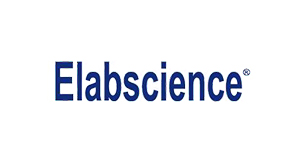Purified Anti-Human CD268 Antibody(H353-4A2)
Purified Anti-Human CD268 Antibody(H353-4A2)
SKU
ELSAN007780P-25mg
Packaging Unit
25 mg
Manufacturer
Elabscience Biotechnology
Availability:
loading...
Price is loading...
Storage: Store at 4°C valid for 12 months or -20°C valid for long term storage, avoid freeze / thaw cycles.
Abbreviation: CD268
Target Synonym: CVID,TNFRSF13C,BAFF-R,BAFFR,BROMIX,CD268,CVID4,prolixin,BAFF R,Tumor Necrosis Factor Receptor Superfamily Member 13C,BR3,BR3,TNFRSF13c,B cell activating factor receptor,BAFF receptor,BAFF receptor (BAFF-R),B-cell-activating factor receptor,BLyS receptor 3,BlySR3,BR 3,CD 268,CD268 antigen,MGC138235,OTTHUMP00000028746,TNFRSF 13C,TR13C,Tumor necrosis factor receptor subunit member 13C
Background: B-cell activating factor (BAFF), also known as BlyS, TALL-1, TNAK, and zTNF4, is a TNF ligand superfamily member and has been designated TNFSF13B. Produced by macrophages, dendritic cells, and T lymphocytes, BAFF promotes the survival of B cells and is essential for B cell matuRation. BAFF binds to three TNF receptor superfamily members: B-cell matuRation antigen (BCMA/TNFRSF17), transmembrane activator and calcium-modulator and cyclophilin ligand interactor (TACI/TNFRSF13B) and BAFF receptor (BAFF R/BR3/TNFRSF13C). These receptors are type III transmembrane proteins that lack a signal peptide. Whereas TACI and BCMA bind BAFF and another TNF superfamily ligand, APRIL (a prolifeRation-inducing ligand), BAFF R selectively binds BAFF. The BAFF R extracellular domain lacks the TNF receptor canonical cysteine-rich domain (CRD) and contains only a partial CRD with four cysteine residues. Human and Mouse BAFF R share 56% aa sequence identity. BAFF R is highly expressed in spleen, lymph node and resting B cells. It is also expressed at lower levels in activated B cell, in resting CD4+ T cells, in thymus and peripheral blood leukocytes. BAFF knockout mice lack mature B cells. Similarly, A/WySnJ mice that are defective in BAFF-R intracellular signaling also lack mature B cells, suggesting that BAFF R is the critical receptor for BAFF during B lymphopoiesis. In contrast, BCMA- or TACI-deficient mice have no major defect in B-cell development. While the function of BCMA is not defined, TACI has been shown to control B-cell homeostasis and T-cell-independent immune responses.
Immunogen: Recombinant Human CD268 protein
Buffer: PBS, pH 7.2. Contains 0.05% proclin 300.
Dilution: FCM 2 μg/mL(1×105-5×105 cells)
Abbreviation: CD268
Target Synonym: CVID,TNFRSF13C,BAFF-R,BAFFR,BROMIX,CD268,CVID4,prolixin,BAFF R,Tumor Necrosis Factor Receptor Superfamily Member 13C,BR3,BR3,TNFRSF13c,B cell activating factor receptor,BAFF receptor,BAFF receptor (BAFF-R),B-cell-activating factor receptor,BLyS receptor 3,BlySR3,BR 3,CD 268,CD268 antigen,MGC138235,OTTHUMP00000028746,TNFRSF 13C,TR13C,Tumor necrosis factor receptor subunit member 13C
Background: B-cell activating factor (BAFF), also known as BlyS, TALL-1, TNAK, and zTNF4, is a TNF ligand superfamily member and has been designated TNFSF13B. Produced by macrophages, dendritic cells, and T lymphocytes, BAFF promotes the survival of B cells and is essential for B cell matuRation. BAFF binds to three TNF receptor superfamily members: B-cell matuRation antigen (BCMA/TNFRSF17), transmembrane activator and calcium-modulator and cyclophilin ligand interactor (TACI/TNFRSF13B) and BAFF receptor (BAFF R/BR3/TNFRSF13C). These receptors are type III transmembrane proteins that lack a signal peptide. Whereas TACI and BCMA bind BAFF and another TNF superfamily ligand, APRIL (a prolifeRation-inducing ligand), BAFF R selectively binds BAFF. The BAFF R extracellular domain lacks the TNF receptor canonical cysteine-rich domain (CRD) and contains only a partial CRD with four cysteine residues. Human and Mouse BAFF R share 56% aa sequence identity. BAFF R is highly expressed in spleen, lymph node and resting B cells. It is also expressed at lower levels in activated B cell, in resting CD4+ T cells, in thymus and peripheral blood leukocytes. BAFF knockout mice lack mature B cells. Similarly, A/WySnJ mice that are defective in BAFF-R intracellular signaling also lack mature B cells, suggesting that BAFF R is the critical receptor for BAFF during B lymphopoiesis. In contrast, BCMA- or TACI-deficient mice have no major defect in B-cell development. While the function of BCMA is not defined, TACI has been shown to control B-cell homeostasis and T-cell-independent immune responses.
Immunogen: Recombinant Human CD268 protein
Buffer: PBS, pH 7.2. Contains 0.05% proclin 300.
Dilution: FCM 2 μg/mL(1×105-5×105 cells)
| SKU | ELSAN007780P-25mg |
|---|---|
| Manufacturer | Elabscience Biotechnology |
| Manufacturer SKU | AN007780P-25mg |
| Package Unit | 25 mg |
| Quantity Unit | STK |
| Reactivity | Human |
| Clonality | Monoclonal |
| Application | Flow Cytometry |
| Isotype | Mouse IgG1 κ |
| Host | Mouse |
| Conjugate | Unconjugated |
| Product information (PDF) |
|
| MSDS (PDF) |
|

 Deutsch
Deutsch







